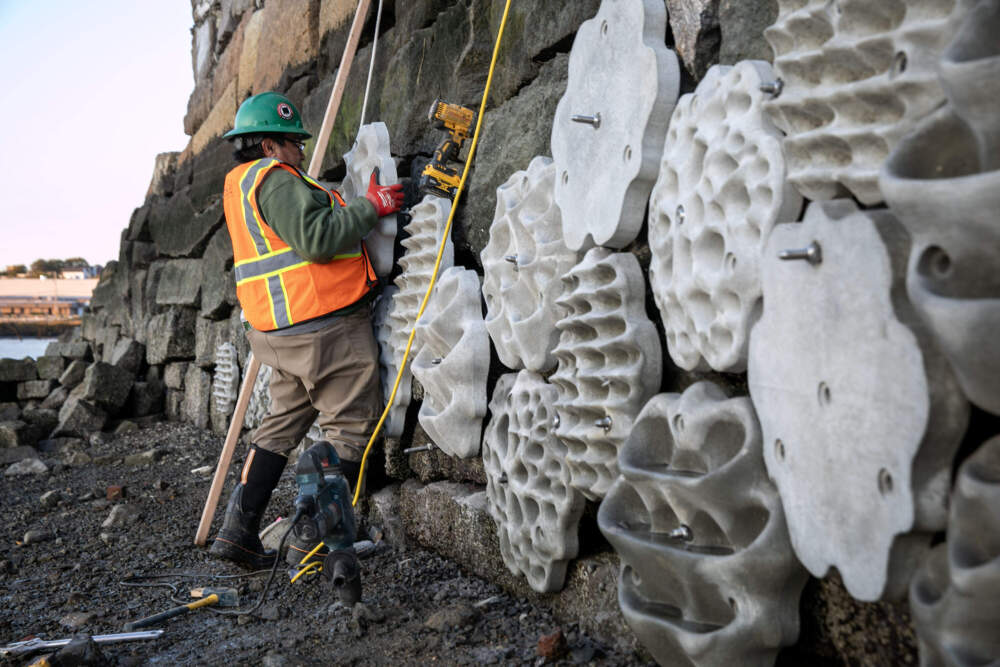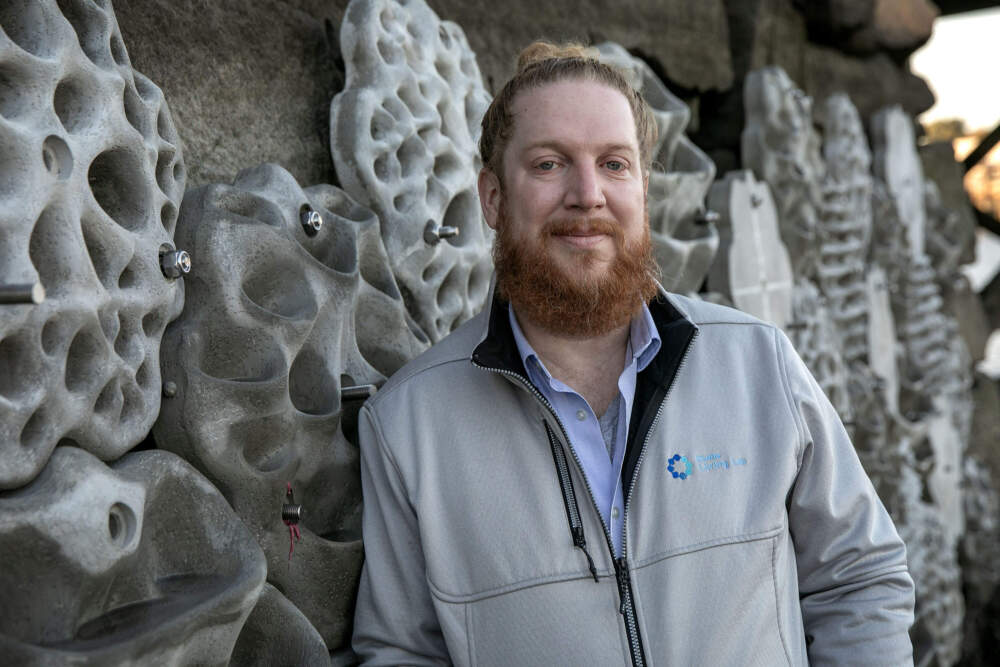Condor Street Urban Wild is a grassy oasis in East Boston with park benches, walking paths and lots of open sky. The park borders Chelsea Creek, a waterway much more urban than wild. At low tide it is possible to walk down to the rocky beach, which is shared by seagulls and pieces of broken glass.
A pilot project by the Stone Living Lab at the University of Massachusetts Boston aims to make this stretch of urban beach more conducive to marine life by turning a section of seawall into a haven for clams and algae.

“It’s kind of an ecological wasteland, isn’t it?” Jarrett Burns said, appraising the nearby seawall with a discerning eye. Burns is an associate professor of biology at UMass Boston.
“You can see there’s some crustaceans, there’s some green algae, but most of what you see on that wall is just big, flat blocks of concrete and stone,” he said. “What we’re trying to do is change history.”
The story is common in Massachusetts. The state has more than 1,500 miles of coastline — Boston alone has about 47 — and many communities rely on stone or concrete walls for storm and flood protection, especially as the risk increases with climate change. These flat walls are often poor homes for marine life and can destroy coastal ecosystems.

Ideally, natural ecosystems that offer both flood control and habitat — such as wetlands and salt marshes — would be left in place. In some cases, they can be recovered.
But there is another possible solution. At Chelsea Creek, workers are transforming a lifeless stone wall into a “Living Seawall” by screwing 120 concrete panels onto the granite blocks. Each 40-pound, 2-foot-wide panel looks like a giant snowflake covered in nooks and crannies. They will be underwater at high tide, providing a home for seaweed and clams.

“Living walls are a way we can have a real win when it comes to protecting against sea level rise and storm surges,” Burns said. “We can both implement protections for people and we can create these beautiful natural habitats that will allow the shoreline to thrive.”
Stone Living Lab managing director Joe Christo said the project started more than a year ago with a call from Buckingham Palace.
The Living Seawalls technology was a 2021 finalist for the Earthshot Prize, Prince William’s international climate solutions competition. The Australian creators wanted a partner to bring their technology to North America. Now their first two sites on this continent are in East Boston and Seaport.

“Both sites are prototypes,” Christo said. His group plans to monitor the installations over the next year and may add other sites around Boston.
The panels won’t harm seawalls, Christo said, and could add benefits for people, too — a more attractive intertidal zone, possibly cleaner water and a restored ecosystem that connects an industrial inlet to the living ocean.
“These living walls are a way to make gray infrastructure greener,” he said.

The pilot project cost about $400,000, or about $400 per square foot, according to Christo. The price includes site selection, design, fabrication, installation, project management, permitting, surveying and monitoring. Stone Living Lab is picking up the tab and partnering with organizations like the Science Museum and the Children’s Museum for outreach and education.
Burns and his students at UMass will study the installations for signs of life over the next year to see which plants and animals show up and which of the five types of panels allow marine organisms to thrive. So far, the project looks promising. Some of the panels harbored clams and snails just a few days after they were installed.
“It’s pretty exciting,” Burns said, sooooooooooooing with delight as he searched for the little critter panels. “It’s just like a kid in a candy store, walking out and just seeing every day who’s walked in, who’s fallen, who lives there.”

This segment airs on November 1, 2024. Audio will be available after the broadcast.
